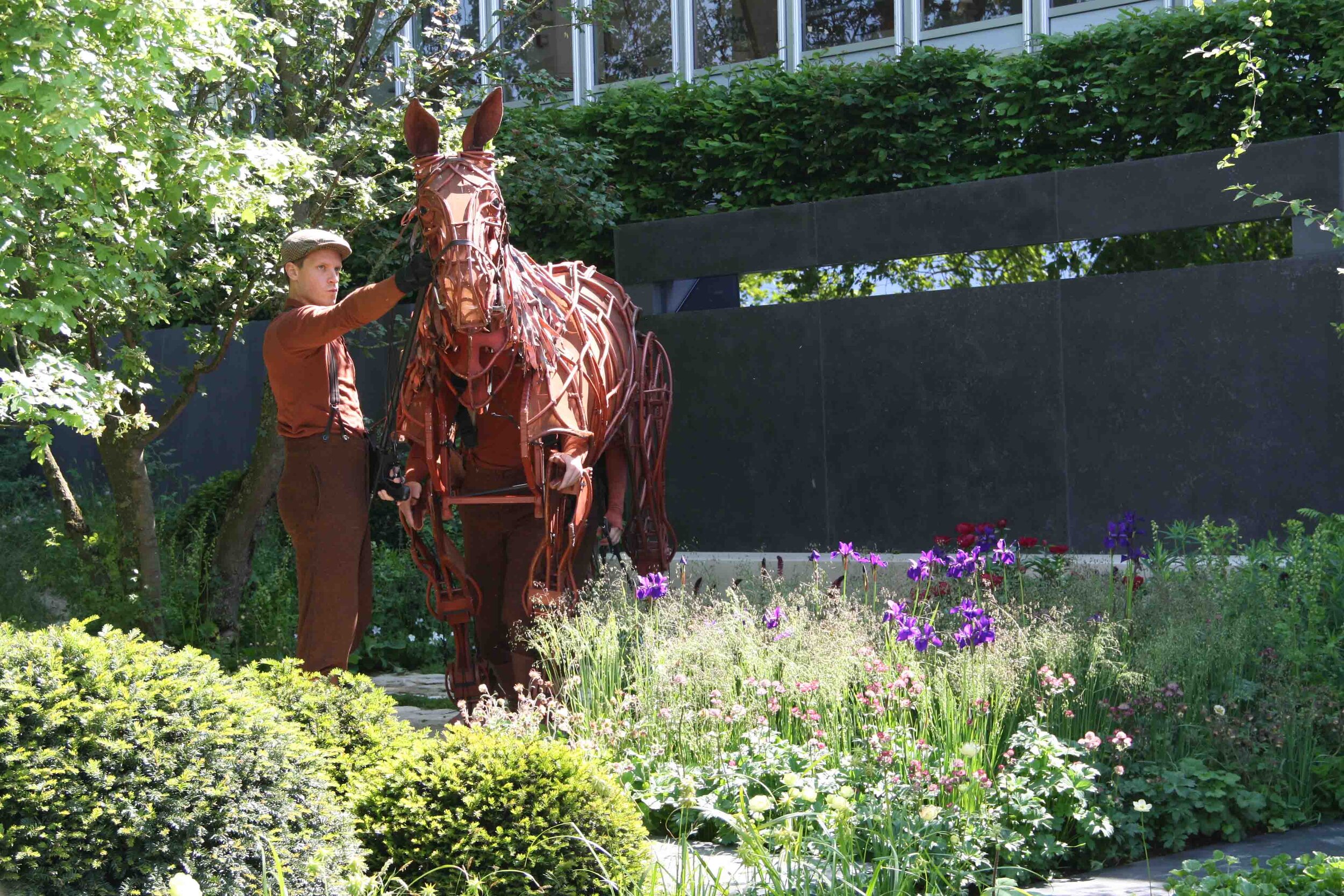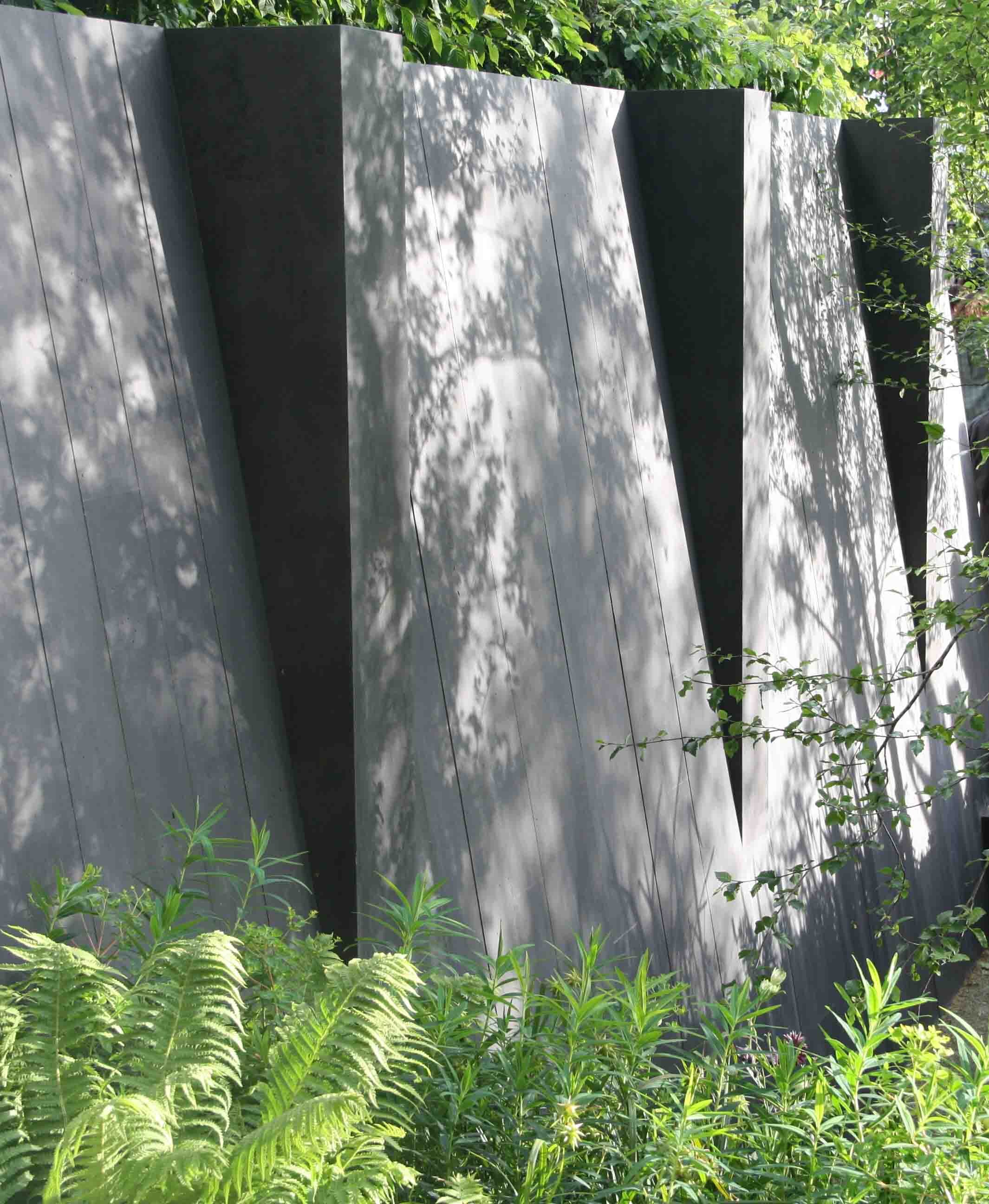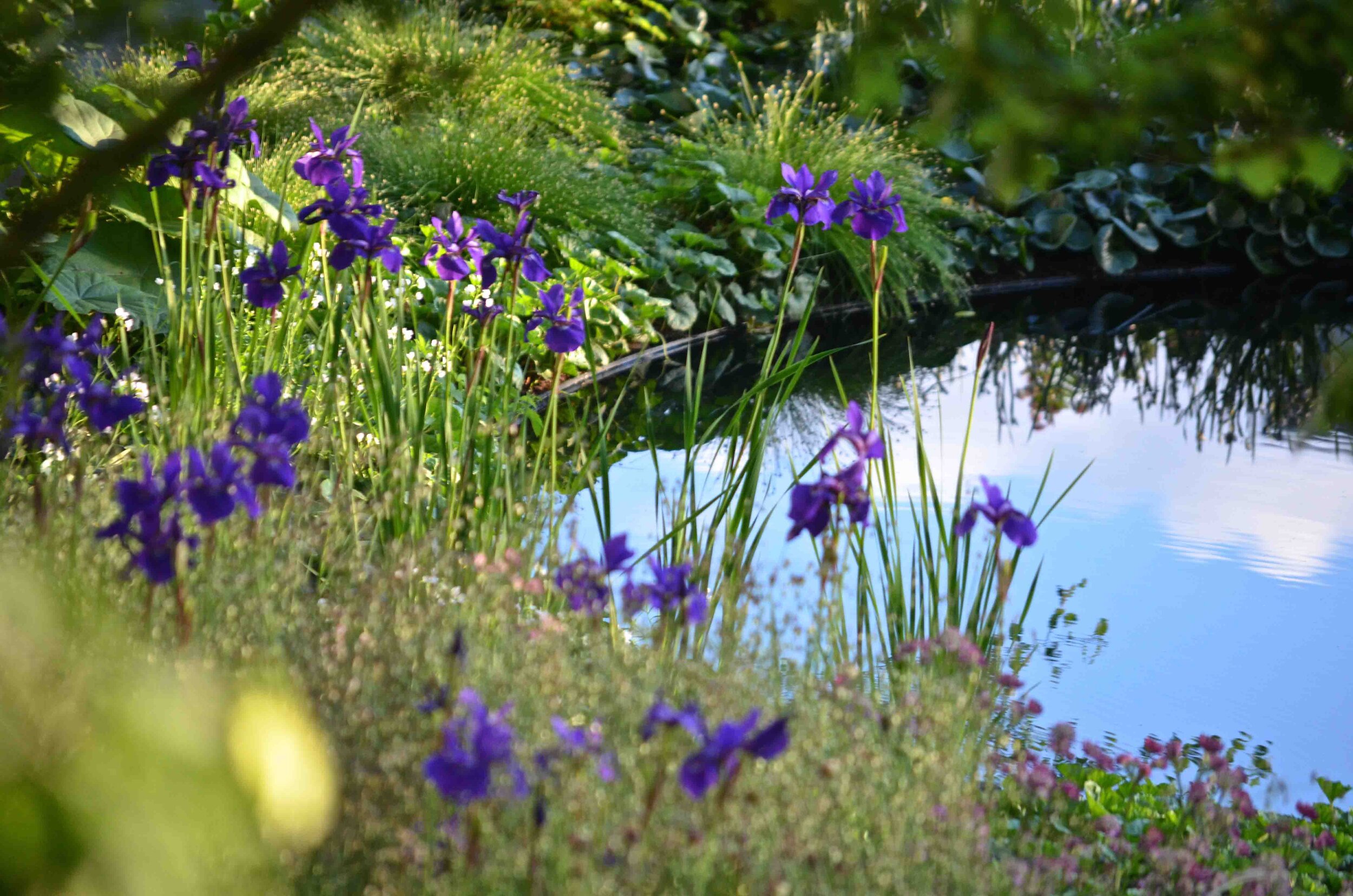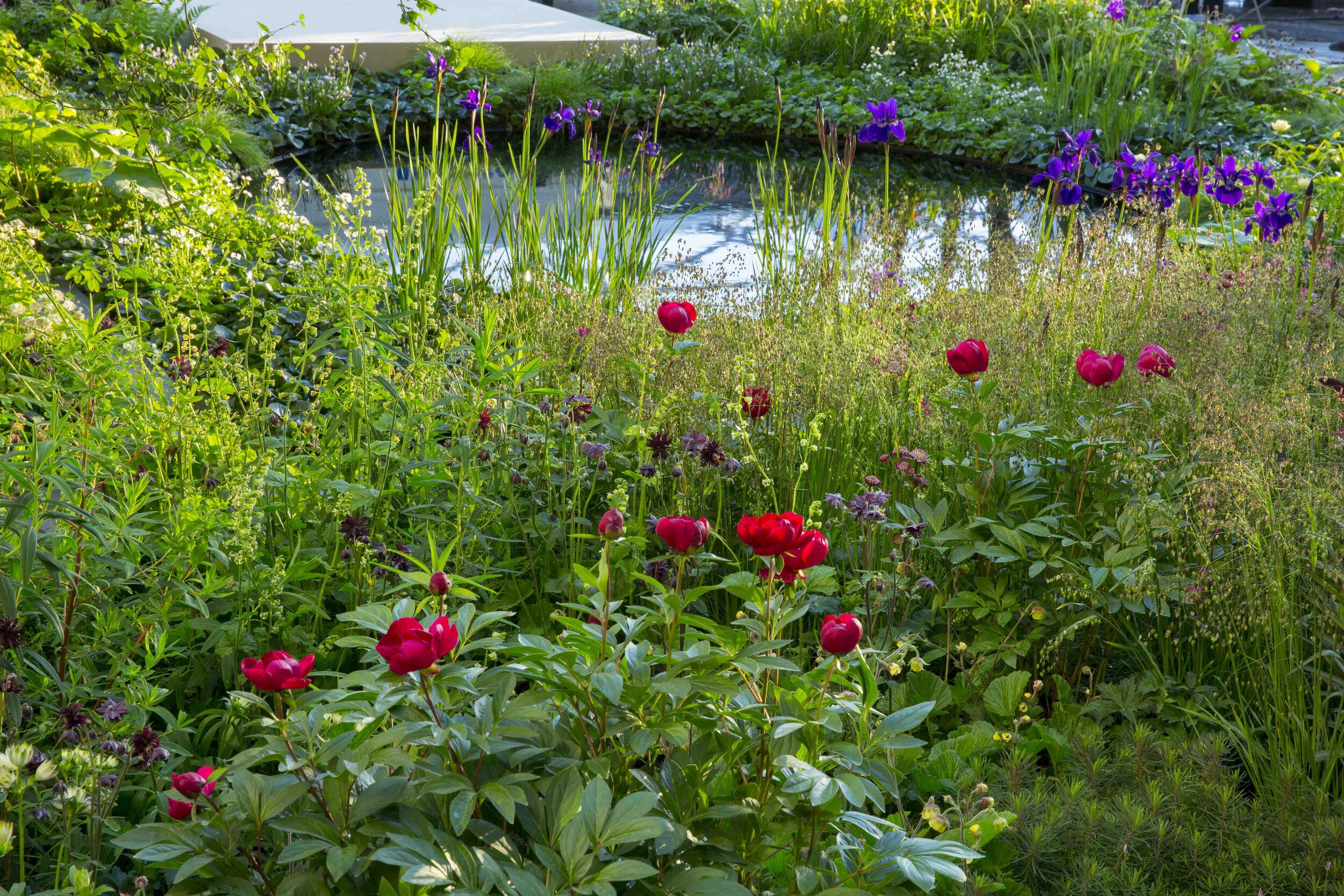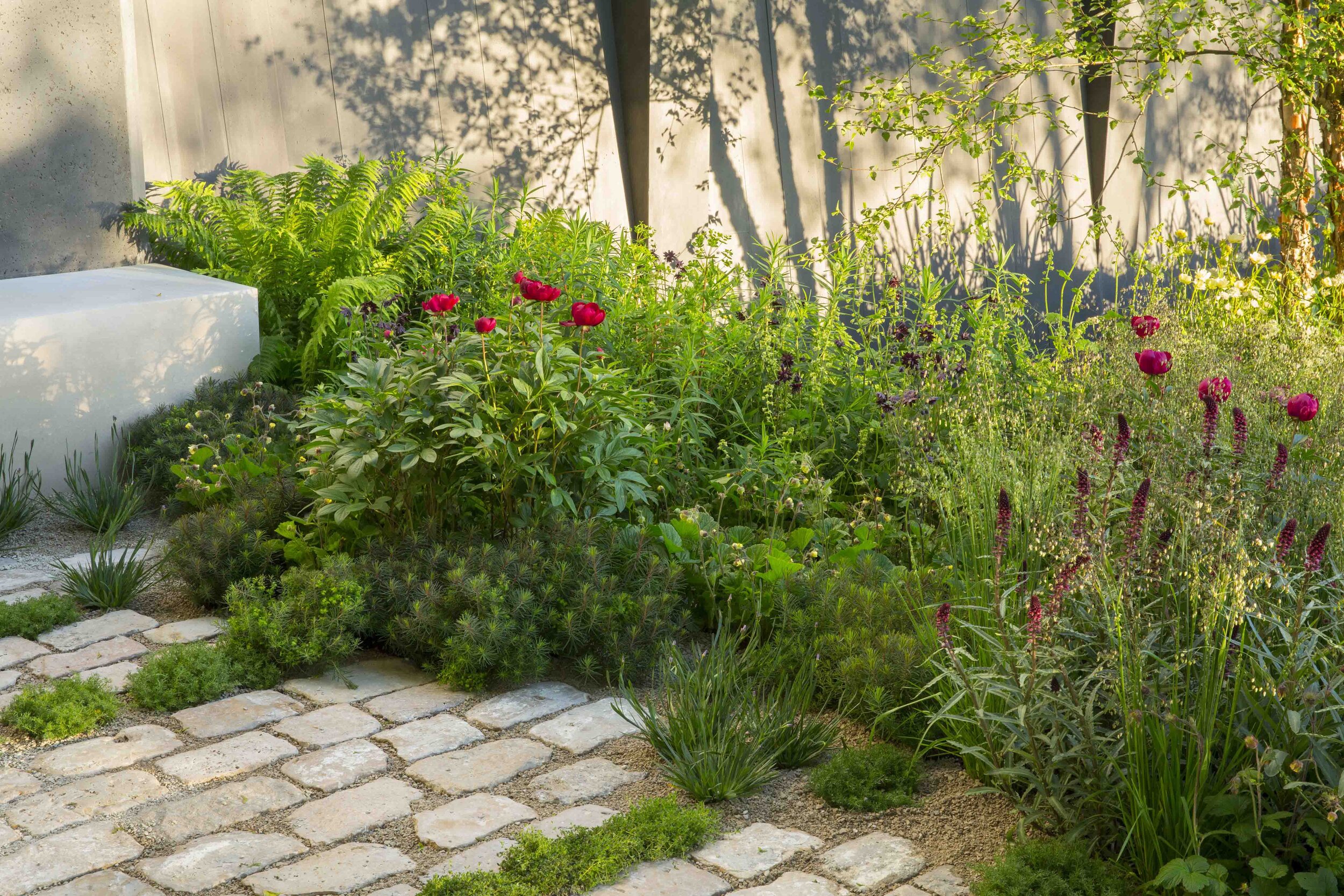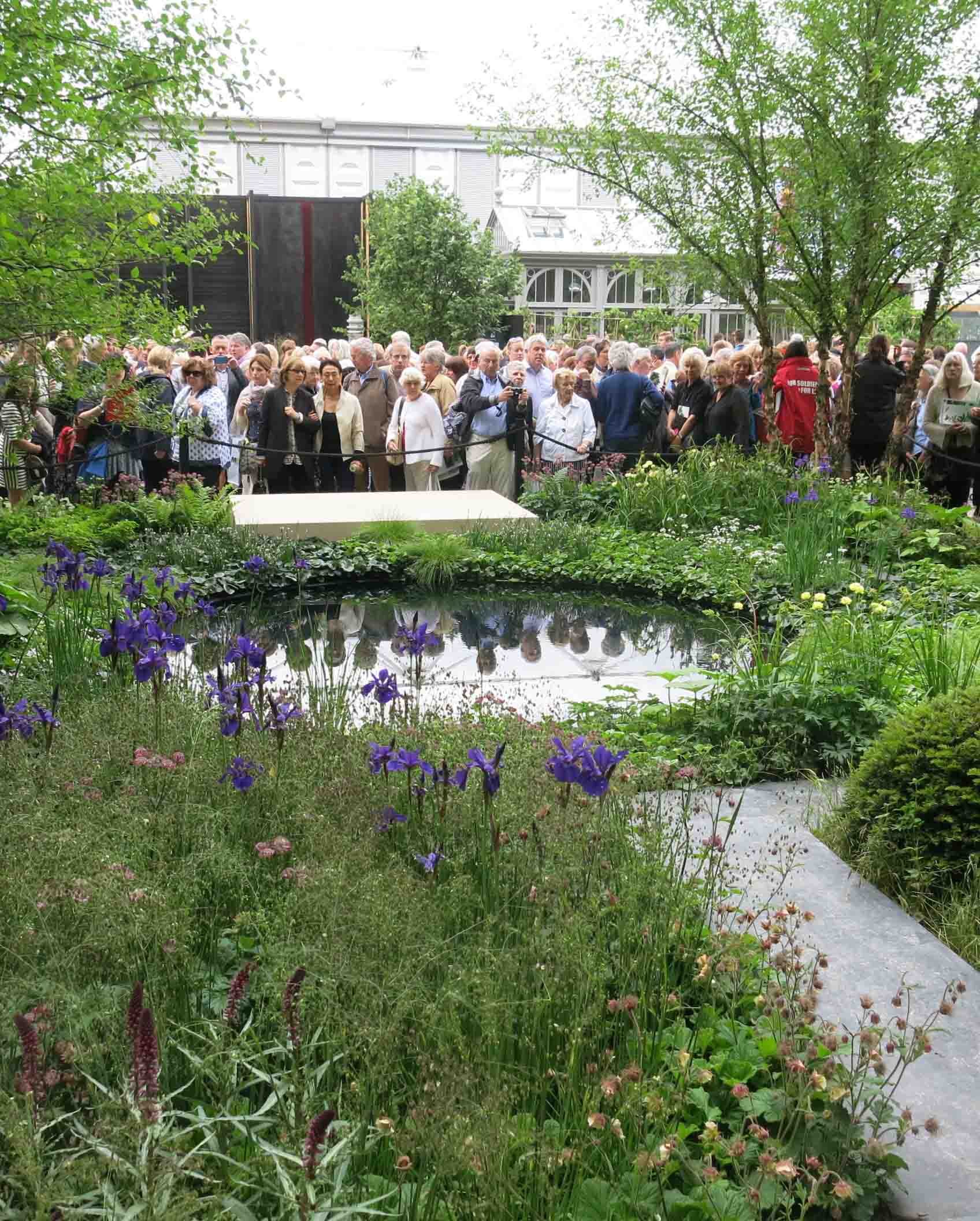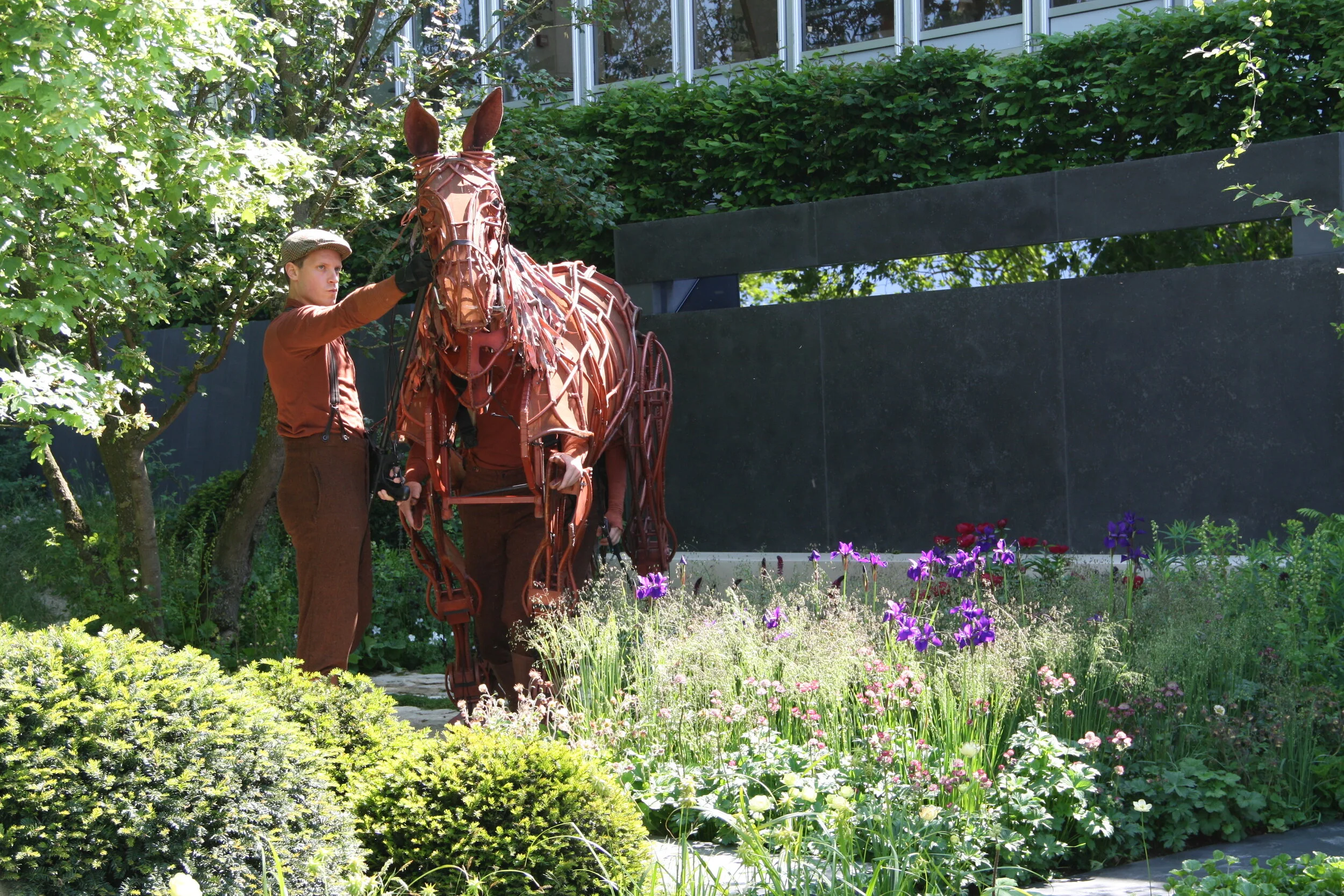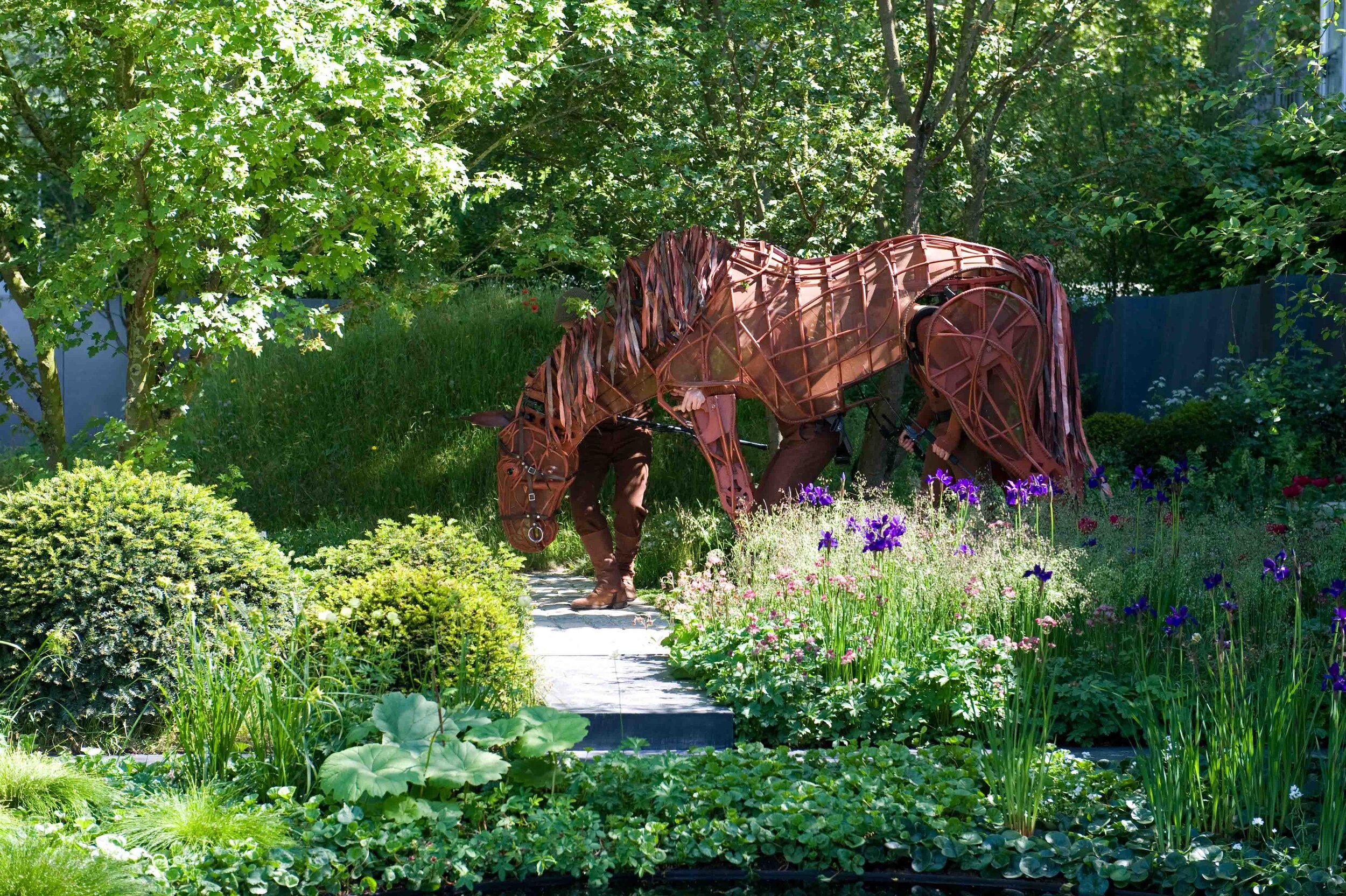
No Man’s Land.
Gold Medal-winning garden at RHS Chelsea Flower Show 2014
The aim of the garden was to remember this conflict and reflect how the landscape of the Western Front, though changed forever, has regenerated and healed. This is a metaphor for the effect of war on the human body and spirit and its capacity to recover.
Photography by Marianne Majerus; Marcus Harpur © Copyright
Grass Mound.
Refers to the Butte de Warlencourt an ancient burial mound held for most of the war by the Germans and which came to be seen as a symbol by the allied forces of the menace of the Germans.
Water Basin.
Represents the many deep circular mine craters which lie all over the Western Front and which now have become peaceful havens for plants and wildlife.
Lost Gardens.
An area of mixed native and ornamental planting amongst limestone setts which represent the villages and towns that were destroyed or badly damaged during the conflict. This lost garden area reminds us of the private gardens of the people living in these communities.
Trenches.
An excavated area below ground and a number of grass mounds which remind us of the trench and tunnel networks which ran through the area and which can still be detected today.
Plinth.
A long polished concrete wall along one boundary which references the many fortifications and pillboxes still found along the Western Front. The central plinth has a long slit which reminds us of the firing and viewing platforms in the trenches.
